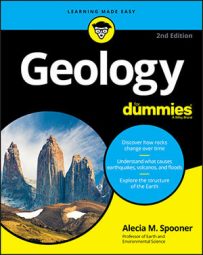Changing Course: River Flooding
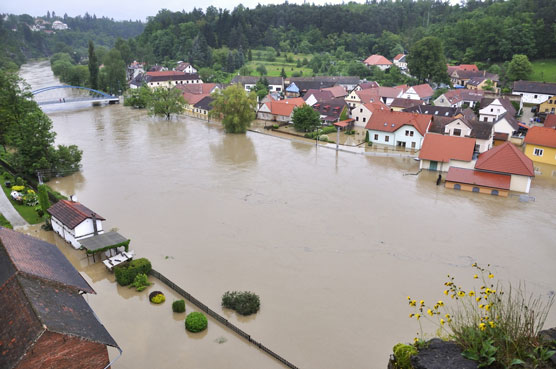
©Mirvav/Shutterstock.com
All over the world water flows from higher elevations to lower elevations as stream or river flow. The movement of water through a region over a long period of time carves out riverbeds and stream channels. But rivers don’t always stay in the same place. Under the right conditions, they may change course or overflow their banks, resulting in a flood.
Floods are caused by many factors, but the bottom line is that there is too much water in one place at one time and the streamflow of the river can’t move it downstream quickly enough. This event is very common in the springtime, as rainfall melts snow and overloads the stream channels with water. As the water spills over the banks of the river channel, whole towns may find themselves inundated.
Lives lost to flooding are often the result of flash flooding — when rainfall occurs so quickly and heavily that there is no warning before water comes rushing across roadways and taking out bridges. Drivers and their vehicles may be swept away in a current of flood water. Another dangerous situation during floods is when people attempt to drive through pools of standing water, not realizing how deep it really is until it’s too late.
Caving In: Sinkholes
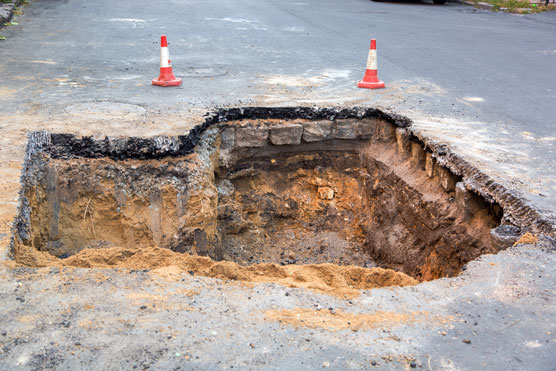
©Bespaliy/Shutterstock.com
Sinkholes occur when groundwater erodes underground rock, removing the bedrock material that is supporting the land surface, so that the soil, sediment, and any structures built on it collapse. Sinkholes can occur anywhere that the underlying rocks have water-soluble minerals in them and are most common in regions with karst topography. In such regions, the underground erosion creates caves and cavities beneath the surface, so there’s not enough material to support the land surface above.
Sinkholes often cave in right after a heavy rainfall; the added weight of the water in the soil is too heavy for the roof of the underground cavity to support, and it collapses. When a sinkhole forms, collapsing inward, it leaves a funnel-shaped depression on the ground surface. Anything on that surface sinks into the hole, including roads, bridges, buildings, and homes.
Sliding Down: Landslides
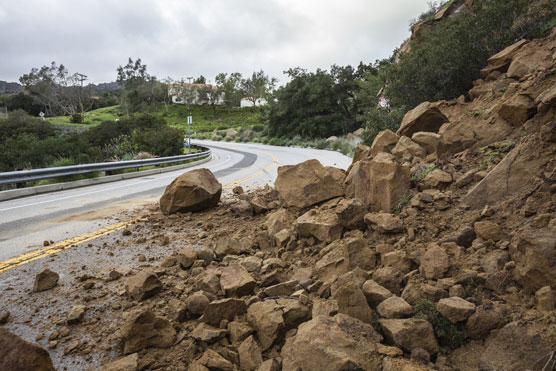
©trekandshoot/Shutterstock.com
Landslides are a type of mass wasting where large amounts of rock and soil move downslope rapidly. They are most hazardous in populated and developed regions, where they may destroy homes or block roads.
Landslide conditions are created under a number of different circumstances that result in unstable slopes — where the materials on the slope cannot be supported, and everything slides down. The potential for a landslide increases when heavy storms bring rain that adds weight to the land surface or when earth-shaking events such as earthquakes or volcanoes occur. Landslide conditions can also be created by erosion.
Shaking Things Up: Earthquakes
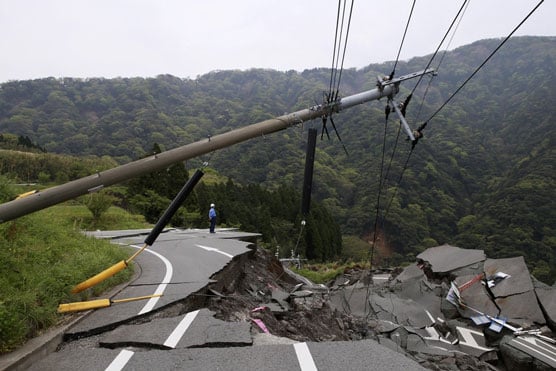
©austinding/Shutterstock.com
Earthquakes occur all over the planet all the time. But they become geologic hazards when they occur near the surface, are particularly strong, or happen in regions that are heavily populated. The combination of these factors is what determines the damage and death toll of an earthquake event.
The amount of damage resulting from an earthquake is related not only to its strength and location but also to the type of structures it affects. In some regions, such as the state of California, measures have been taken to construct buildings that can withstand the occasional ground-shaking activity of earthquakes. As seen in the 2010 earthquakes that affected Haiti and Pakistan, less modernized regions may be devastated by an earthquake.
When earthquakes occur, they may initiate a phenomenon called liquefaction. Liquefaction is when the shaking movement of the earthquake leads saturated sediments (commonly sand) to flow as if they are a liquid. The liquefaction of sediments by earthquakes can result in all the damages associated with landslides.
Efforts to record and study earthquakes are designed to eventually predict them in hopes of avoiding the destruction of property and loss of human life that often result from earthquake activity.
Washing Away Coastal Towns: Tsunamis
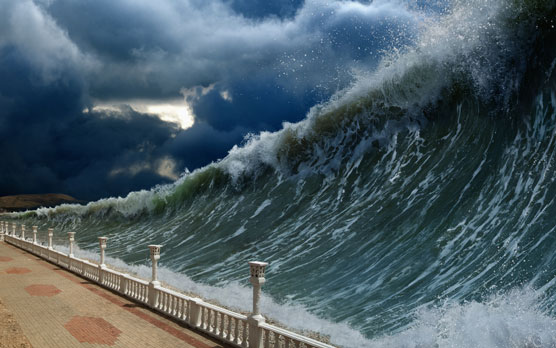
©IgorZh/Shutterstock.com
Another hazard, a tsunami, is closely related to earthquakes and landslides. When either of these two events occurs underwater, it creates a large wave that can travel hundreds of miles an hour across the open ocean, washing ashore as a wall of water and rushing miles inland. Sometimes incorrectly referred to as tidal waves (they have nothing to do with the tides), these giant waves have been recorded in South America as a result of earthquakes that occurred in Japan.
Similarly, offshore, undersea landslides can displace large amounts of water, sending the water onshore with devastating outcomes. Coastal towns affected by landslide-generated tsunamis often have little to no warning.
Earthquakes do provide some warning that a tsunami may be on its way. If you are near the coast and feel an earthquake, or if you see the water move far out to sea, get to higher ground immediately. (The water often moves out, like a very fast, low tide, before the large tsunami waves come ashore.)
Damages from tsunamis include the destruction of property and vegetation from the fast-flowing flood waters, as well as the inland water flow or inundation into areas relatively far from shore. Since the 2004 Indian Ocean tsunami, much research on tsunamis (and their relation to earthquakes) has centered on predicting these events and building warning systems to notify communities that may be in danger when a tsunami occurs. Unfortunately, as the 2011 tsunami in Japan illustrated, the warning systems are most effective for regions that are far enough away to respond to warnings before being struck by the massive waves.
Destroying Farmland and Coastal Bluffs: Erosion
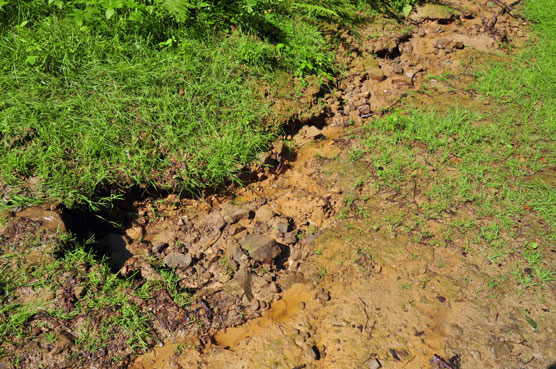
©Meryll/Shutterstock.com
Compared to a volcanic eruption, tsunami, or earthquake, erosion may seem like nothing to worry about. The truth is that you are more likely to be affected in your daily life by soil erosion than you are by any of the more dramatic geologic hazards.
Erosion is the movement of sediments and soil due to wind, water, or other processes. Erosion of soil is most common in areas that are cleared of vegetation (because plants hold the soil in place), such as by overgrazing of herd animals or deforestation. After the soil is removed, the land can no longer support vegetation — or crops — and it becomes useless.
This situation is particularly hazardous in hot, dry regions where cropland, food, and water are already scarce. The erosion of surface soils in such regions has increased with warming global temperatures in the last century: The higher temperatures reduce rainfall, leaving surface sediments more susceptible to removal by wind and making life much more difficult for the people who live there.
Erosion from moving water, such as along rivers, streambeds, and coastlines, is also a hazard and can lead to landslides by undercutting the angle of repose. As the bluffs along rivers or the coast are eroded, any buildings sitting on them are in danger of collapsing into the water below.
Fiery Explosions of Molten Rock: Volcanic Eruptions
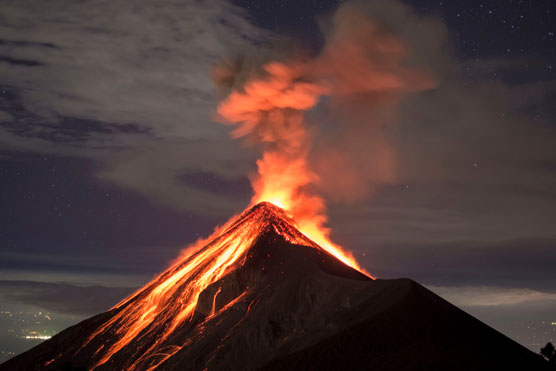
©fboudrias/Shutterstock.com
As geologic hazards go, volcanic eruptions make for good photo ops, with fiery red lava and large ash clouds flowing from mountaintops. The nature of a volcanic eruption and, thus, the hazards it presents vary depending on the type of volcano and the composition of the molten rock inside. Some volcanic eruptions include slow flowing lava pouring out, while others are explosive, sending massive amounts of gas, ash, and broken rock materials miles into the air and down mountainsides.
While the lava that flows from volcanoes is extremely hot and dangerous, it moves slowly and doesn’t present an immediate danger to nearby towns. The real hazards from volcanic eruptions are in the form of ash clouds and pyroclastic flows. Ash clouds from volcanoes can travels for miles in the air. The ash can block the sun, reduce visibility for drivers, and damage airplane engines. Pyroclastic flows are debris flows of intensely heated rock and ash that move down mountains through the valleys. Unlike flowing lava, pyroclastic flows move very quickly (almost 450 mph) and destroy everything in their path.
And finally, volcanic eruptions can release large amounts of poisonous gases into the atmosphere, which endanger the health of people in nearby communities.
Melting Ice with Fire: Jokulhlaups
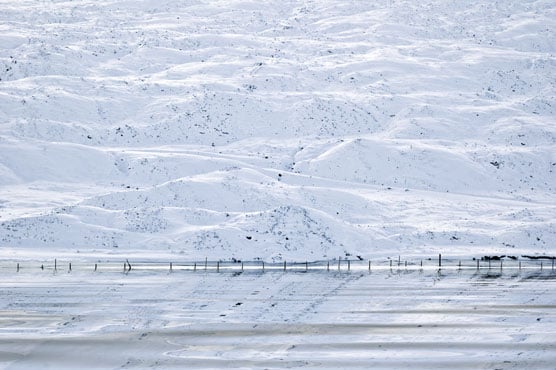
©Brendan Howard/Shutterstock.com
The Icelandic term jokulhlaup (sometimes pronounced yer-kul-hyolp) refers to a flood from sudden melting of a glacier. In Iceland, where glaciers cover a volcanic landscape, small jokulhlaups often occur when the ice is heated by volcanic activity, melts, and rushes to the sea. These “glacial outburst floods” cause all the damage associated with massive flooding and occur with the unpredictability of a volcano.
Jokulhlaups, while first named in Iceland, are not restricted to Iceland. Any region where glaciers form is in danger of experiencing a jokulhlaup. A jokulhlaup can occur when a glacier that dams a lake shrinks enough that the lake water spills out suddenly. The eruption of glacier-covered volcanoes, such as Mount Rainier, Washington, would result in jokulhlaup-type flooding, as well as debris flows from the combination of meltwater and volcanic debris produced during the eruption.
Flowing Rivers of Mud: Lahars
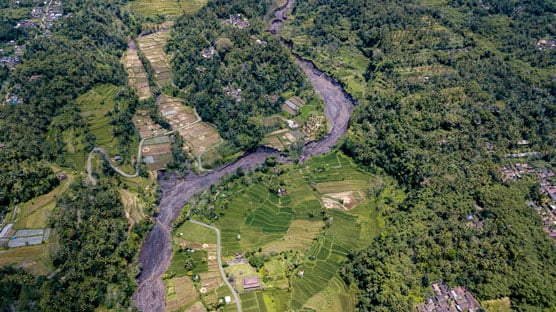
©StarvingLele/Shutterstock.com
When large amounts of water are mixed with sediments, they produce a flowing river of mud called a lahar. Lahars often occur with other hazards covered in this chapter, including jokulhlaups and volcanoes. In the case of lahars from volcanic activity, the volcanic eruption of heated rock and lava can melt glaciers and snow, resulting in lahars. Jokulhlaups, similarly, may result in lahars when the melted glacial water mixes with loose, muddy sediments.
As lahars move through towns, they flow like water but with much greater force. When they stop moving, everything they’ve inundated becomes cemented in the drying mud.
Watching the Poles: Geomagnetism
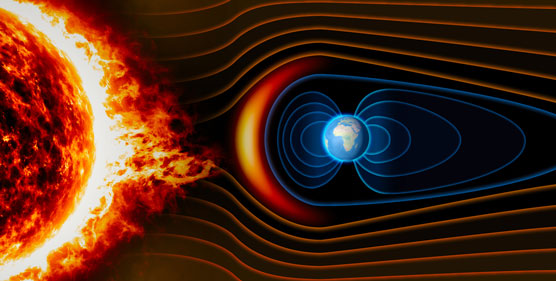
©Naeblys/Shutterstock.com
The earth’s magnetic field may not seem like much of a hazard. On the contrary, it is quite useful if you are lost in the woods with a good compass. Occasionally, however, the strength of the earth’s magnetic field changes, growing stronger or more active. These periods are called magnetic storms, and during magnetic storms the earth’s magnetic field may interfere with technological systems that humans depend on. GPS systems and other satellites can be disrupted. The changes in magnetic activity can also cause blackouts when they affect electrical grids. To prepare for the potential hazards of geomagnetism, the U.S. Geological Survey (USGS) works with NASA and the U.S. Department of Defense to monitor the earth’s magnetic field activity.

